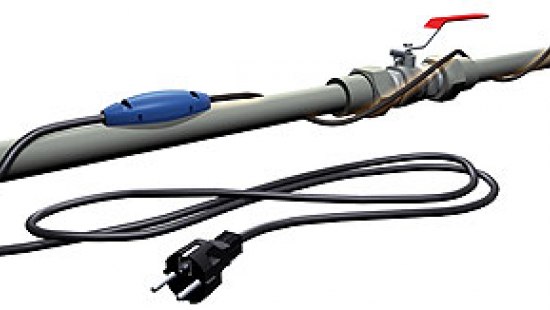PFP heating cables for pipe protection

In July, FENIX extended their offered range of goods to include new PFP heating cables. These cables are intended to be used to protect pipelines against frost – e.g. water distribution pipelines which lead through non-heated areas.
These PFP heating cables will replace the PPC circuits which have been on offer up to now. Like the PPC type, they end in a 1.5 m long supply lead with a plug; also, the technical parameters and the wattage range are similar. However, unlike in the case of PPC cables, the contact thermostat is located in the connection between the supply lead and the heating cable. The thermostat switches at +3 ºC and the heating cable has IP66 coverage.
| Type | Wattage (W) | Length (m) |
|---|---|---|
| PFP 2 m/20 W | 20 | 2 |
| PFP 3 m/30 W | 30 | 3 |
| PFP 4 m/40 W | 40 | 4 |
| PFP 6 m/72 W | 72 | 6 |
| PFP 10 m/136 W | 136 | 10 |
| PFP 14 m/152 W | 152 | 14 |
| PFP 21 m/281 W | 281 | 21 |
| PFP 30 m/337 W | 337 | 30 |
| PFP 42 m/490 W | 490 | 42 |
Installation is very simple thanks to the integrated contact thermostat and the plug ending, and as the heating circuit doesn't require any specialized connection, the PFP circuits are ideal for do-it-yourself installation.
Installation procedure:
- Cover the whole surface of the plastic piping with self-adhesive aluminium tape, which will help to distribute the warmth along the sheathing of the piping (metal pipes do not need to be covered by the tape).
- Place and attach the contact thermostat with the help of the self-adhesive aluminium tape. Attach the heating cable to the piping at the beginning, at the end and in the middle of the created sag. Subsequently, attach the middles of the gradually forming sags until several even loops are created.
- Twist these loops around the pipeline, winding each subsequent loop in the opposite direction to the previous one. Attach the cable to the piping with the help of self-adhesive aluminium tape. After the complete winding of the heating cable, attach the cable along the whole length to the piping with aluminium tape (the tape is attached concurrently with the cable).The aluminium tape is used for heat transfer from the whole surface of the heating cable onto the piping.
- Finally, furnish the piping with the heating cable with thermal insulation. This insulation is necessary – the heating cable cannot substitute for thermal insulation - it only balances out the heat loss which takes place through the insulation and which cannot be prevented completely.








